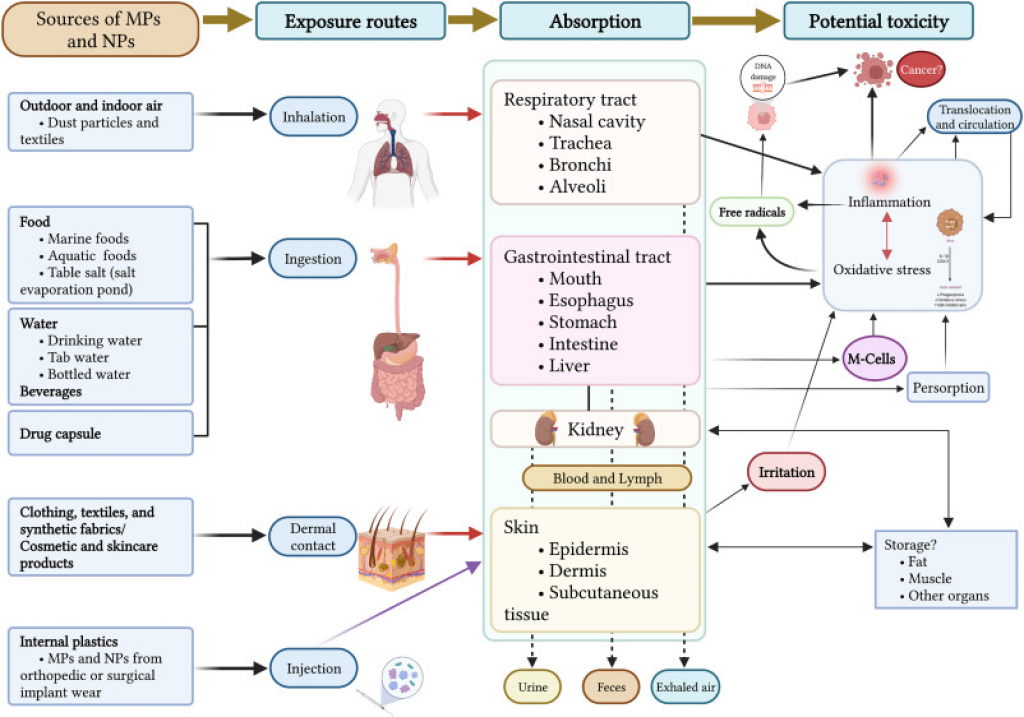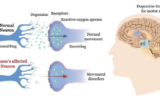
Exposure Routes and Impacts of Microplastics
Subscribers of "Current Affairs" course can Download Daily Current Affairs in PDF/DOC
Subscribe to Never Miss an Important Update! Assured Discounts on New Products!
Must Join PMF IAS Telegram Channel & PMF IAS History Telegram Channel
- Context (DTE): Microplastics and nanoplastics measuring less than 5 millimetres in size are found in the air, water, and food, leading to concerns about how they enter our bodies and the potential health risks.
Exposure routes of Microplastics
- Research has identified three major routes through which microplastics (MPs) and nanoplastics (NPs) can enter the human body:
- Ingestion,
- Inhalation and
- Dermal contact.
Ingestion
- Ingestion, or oral consumption, is a primary route for exposure to MPs & NPs.
- These particles have been detected in drinking water, seafood, salt, bottled water, and even tea and coffee. Microplastics are found in fish, mussels, salts from lakes and oceans, and commercial salts.
- Additionally, tap water has been found to contain microplastics in both developed and developing countries.
Inhalation
- MPs and NPs have been detected in the ambient air, with outdoor and indoor concentrations varying depending on location and environmental factors.
- Sources of airborne microplastics include synthetic textiles, industrial emissions, solid waste dumping sites, and agricultural activities. Sea breeze and sea spray near coastal areas also contribute to atmospheric microplastic pollution.
- Microplastics inhaled may accumulate in the respiratory tract and translocate across the blood-brain barrier, raising concerns about respiratory and neurological health effects.
Dermal Contact
- Consumer products such as face creams, face washes, and cosmetics can contain microplastics, increasing the risk of dermal exposure.
Potential health risks

Gastrointestinal and urinary tract system
- Exposure to MPs & NPs via ingestion can lead to their translocation through the gastrointestinal tract, potential accumulation in tissues, and cause oxidative stress and inflammation.
- Furthermore, exposure to microplastics has been associated with immune system dysregulation and metabolic disorders, raising concerns about their long-term health effects.
Respiratory tract system
- Exposure to these particles may worsen respiratory symptoms and contribute to the development of respiratory disorders.
- Additionally, the size and concentration of microplastics can affect the lung cells.
Blood and immune system
- Changes in serum levels and immune cell activity have been observed following exposure to these particles.
Brain and nervous system
- They lead to oxidative stress, cytotoxicity, and changes in neurotransmitter levels, inflammation in brain tissue, raising concerns about their potential role in the development of neurological disorders.
Embryos and placental barrier
- Microplastics can cross the placental barrier and accumulate in foetal tissues, potentially leading to developmental abnormalities and embryotoxicity.
Learn about Plastic Pollution and Plastic Treaty.




![PMF IAS Environment for UPSC 2022-23 [paperback] PMF IAS [Nov 30, 2021]…](https://pmfias.b-cdn.net/wp-content/uploads/2024/04/pmfiasenvironmentforupsc2022-23paperbackpmfiasnov302021.jpg)











